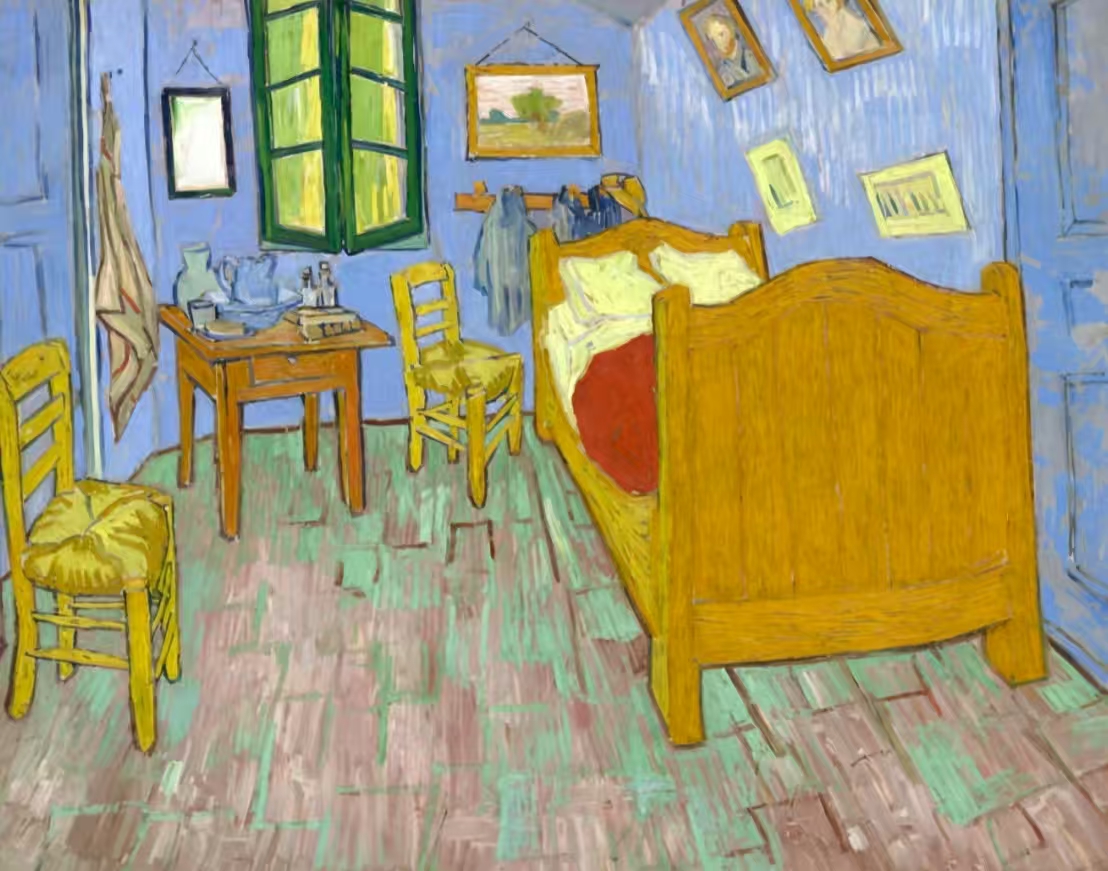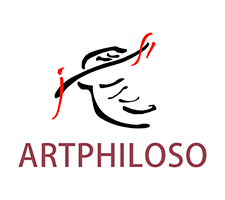“I want people to feel the sun spinning when they look at my paintings.” — Vincent van Gogh
1.The Agony and the Art
Vincent van Gogh (1853–1890) lived a life as chaotic and vivid as his brushstrokes. Born into a Dutch pastor’s family, he drifted across Europe—working as an art dealer, schoolteacher, and missionary—only to be dismissed or rejected for being “too intense.” It wasn’t until the age of 30 that he turned seriously to painting.
In just 10 years, Van Gogh created 864 oil paintings and over 1,000 drawings, including 36 self-portraits and 11 sunflower works. He famously sold only one painting during his lifetime and relied entirely on his brother Theo’s financial and emotional support.
His personal life was equally tragic. Repeated romantic failures, mental illness, and poverty marked his days. After severing his ear and gifting it to a woman in a brothel, he was institutionalized—where he painted The Starry Night and Wheatfield with Crows. In July 1890, at age 37, he shot himself in a wheat field. His final words: “La tristesse durera toujours” — “The sadness will last forever.”
1.“The Bedroom” Comes to China
For the first time, The Bedroom in Arles is being shown in China, as part of a major joint exhibition between the Musée d’Orsay and the Power Station of Art, Shanghai. Crowds lined up for hours, with many joking: “I went all the way to Paris, and Van Gogh came to me.”
💡 Collector Tip: Such high-profile loans often precede increased demand for an artist’s secondary market. Watch for related sales and private offerings.
2.VR Innovation: Painting with Van Gogh
The museum also debuted Mr. Van Gogh, a VR experience allowing visitors to “enter” 21 iconic works, paint on his digital palette, and walk into The Starry Night. It exemplifies how art, tech, and storytelling are merging.
💡 IP Insight: This opens doors to art-based licensing, educational tools, and collectible digital assets—expanding Van Gogh's market impact far beyond traditional collecting.
3.East Meets Gogh: A Cultural Diplomacy Milestone
In June 2025, the French Van Gogh Institute signed an exclusive agreement with China to launch the “East Meets Van Gogh” global tour. It marks Van Gogh’s official entry into Asia’s cultural consumption economy.
4.UK Exhibition Reframes the Myth
The National Gallery in London hosts Van Gogh: The Lover and the Poet, featuring 50 works and focusing on his emotional life. Rare gems like The Weeping Tree are on view in the UK for the first time.

From 400 francs to $50 million
• The only painting sold in his lifetime: The Red Vineyard — 400 francs (~$1,000 today)
• Century-later comeback: In 2021, Montmartre Street Scene, hidden for 100 years, sold for €13 million.
• Why so valuable today?
o Scarcity: Over 90% of Van Gogh’s work is locked in public institutions.
o Cultural currency: His name alone boosts media, museum, and market interest.
o Crossover potential: He is a staple in fashion collabs, museum merch, NFTs, and education.
💡 Investment Reality: Blue-chip Van Goghs rarely appear on the open market. Private sales or invitation-only auctions are now the primary access points.
Van Gogh’s art offers more than aesthetic brilliance—it’s an emotional experience with timeless value.
• Museum-grade works = Blue-chip investments
Originals are nearly unattainable, but when they do surface, prices skyrocket. If you’re serious, start cultivating relationships with Sotheby’s, Christie’s, and curators.
• IP and brand potential
VR shows, global tours, and co-branded experiences show how Van Gogh has become an art brand, ripe for innovation.
• Emotional resonance is the ultimate value moat
Van Gogh painted with his soul. His words—“I paint with the urgency of a man drowning”—explain why his work touches people far beyond the art world.
🎨 Bottom Line: Van Gogh isn’t just an artist. He’s a phenomenon—spanning centuries, media, and markets.
A man who died broke and broken, with just one painting sold in his life, is now one of the most beloved and valuable artists in the world. How?
Maybe the answer lies not in The Starry Night, but in Self-Portrait with Bandaged Ear—a face twisted with pain, yet radiant with color. It’s not just a painting. It’s a soul, still burning.
